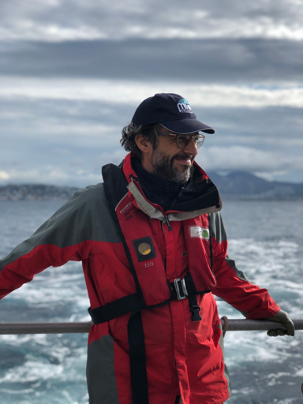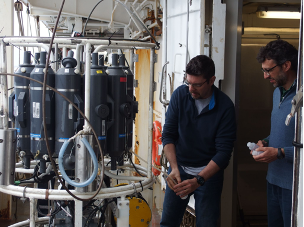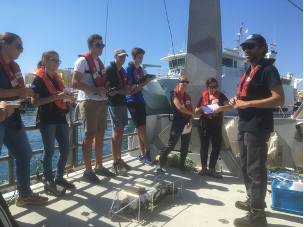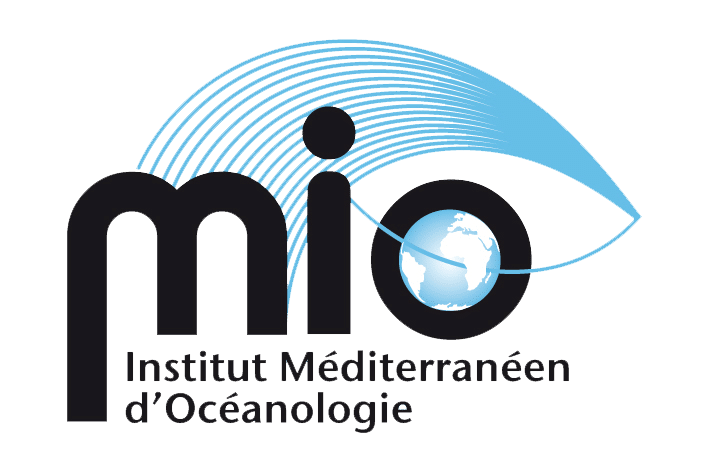BioSWOT-Med blog: Trying to solve the plankton paradox in the Mediterranean
Andrea Doglioli, chief scientist of BioSWOT-Med, explains the objectives of the campaign and how he and his collaborators will attempt to unravel the plankton paradox in the Mediterranean Sea by studying the fine scales of the ocean. The results of the campaign will provide a better understanding of the physical-biological coupling that applies to most of the world's ocean.
RESEARCH THEMES - Andrea Doglioli is the Chief Scientist of the BioSWOT-Med campaign and Associate Professor of Physical Oceanography at the University of Aix-Marseille. His research at the Mediterranean Institute of Oceanography (MIO) focuses on ocean circulation, and in particular on ocean eddies, filaments and turbulence, and their impact on the dispersion of nutrients, marine organisms, sediments and pollutants. In his research, Andrea Doglioli uses both numerical modelling and field measurements at sea, with a preference for Lagrangian methods. SWOT AdAC asked him about the objectives of the BioSWOT-Med cruise.
What are the main research questions of the BioSWOT-Med campaign?
I could sum it up by saying that the aim of the BioSWOT-Med campaign is to try and resolve the plankton paradox. In ecology, there is a principle according to which, when resources are limited, living organisms fight each other for access to them and only a few individuals, the best adapted, can survive. In reality, when we study the microscopic organisms in marine plankton, we find that, despite the very limited availability of nutrients, there is enormous biodiversity. Hence the plankton paradox! We hypothesise that this biodiversity is made possible by the continuous mixing of very small movements generated by currents at the surface of the ocean. For this reason, during the BioSWOT-Med campaign, we will be measuring the vertical flows of nutrients, zooplankton grazing on phytoplankton and the horizontal movements separating the different plankton communities. We will obtain data that will enable us to study what is happening on fine scales.
The ocean region around the Balearic Islands is one of the places where there will be a SWOT crossover. You have already conducted other oceanographic campaigns in this region. How is this region characterised? Why is it interesting to study the physical-biological coupling in this region?
The oceanic region around the Balearic Islands is particularly interesting, as it is characterised by the presence of different types of surface water: water recently arriving from the Atlantic via the Strait of Gibraltar and water that has been resident in the Mediterranean for several years. In the past, we have already observed that these different types of water are populated by different plankton communities, separated by ephemeral currents. The aim of this new campaign is to understand the mechanisms underlying these previous observations. As oligotrophic (i.e. nutrient-poor) and moderately energetic regions are representative of a very large part of the world ocean, our results may have global significance when extrapolated to the ocean as a whole.
During the campaign, you will be studying oceanic processes at the sub-mesoscale. Can you tell us what this is all about?
The term "scale" is used to represent the size in space and duration in time of a dynamic phenomenon. For example, the Gulf Stream is a "large" scale current: it crosses the entire Atlantic basin and is permanent; the large eddies generated by the Gulf Stream are called "mesoscale" eddies because they have a radius of around 100 km and can live for several months or a few years; if you zoom in a little more, you can also see small, ephemeral eddies or current filaments between the rings, which characterise the oceanic "sub-mesoscale". Finally, the term "fine scale" covers the meso and sub-meso scales.
The BioSWOT-Med campaign will follow an adaptive sampling strategy. What does this mean?
Because sub-mesoscale features are small and ephemeral, to sample the waters within them you need to use satellite images of the ocean surface to identify them in your study area. Then we design the research vessel's itinerary so that it encounters them: this is what we call an adaptive sampling strategy.
During the campaign, you will sometimes let the boat drift at sea with the currents. Can you explain how you do this and why?
Yes, this technique is called Lagrangian sampling, named after the 18th century mathematician Joseph-Louis Lagrange, who suggested sampling ocean currents by following their movement and using drifting objects. So we're going to deploy drifting buoys that we can track using satellite positioning. What's interesting is that we can then obtain a time series, for example, of plankton concentration in a target body of water that is not affected by the transport of the current itself, and then focus on the processes that affect their concentration, such as nutrient flows or zooplankton grazing.
The BioSWOT-Med sampling strategy consists of carrying out the same types of measurements three times. Why do you do this?
We repeat the sampling three times because we need to observe temporal variations, increase the precision of our estimates and test the reproducibility of our measurements.
Life on board a research vessel has to be organised. What will be your daily routine and the organisation of your research activities?
To work effectively on an oceanographic cruise, you need to be well organised! Those in charge of the adaptive and Lagrangian strategy will have daily meetings with each other to study the satellite images and the position of the buoys, and also with the crew to define the route. During the sampling stations, precise protocols will be followed to make the most of the water sample from the depths of the ocean. What's more, as BioSWOT is a multidisciplinary cruise, we will also be organising seminars on board to share the preliminary results obtained by specialists in each discipline, such as physics, chemistry and biology.
This BioSWOT-Med campaign is a collaboration between various institutions, both in France and internationally. Who are these institutions?
Yes, absolutely. BioSWOT-Med is an interdisciplinary and international campaign! The researchers taking part in the BioSWOT-Med campaign are affiliated to the University of Aix-Marseille, the CNRS, Sorbonne University, the National Museum of Natural History (France), the CNR and the OGS (Italy), the Thünen Institute (Germany), the University of Arizona (USA) and the University of Auckland (New Zealand).
We also collaborate with colleagues from SHOM, CEA, IFREMER, ULCO, Université Gustave Eiffel (France), CSIC (Spain), SZN (Italy), University of Bergen (Norway), UCSD, MBARI, NWRA and University of Washington (USA).
More than 50 people are involved in BioSWOT-Med. They work for major oceanography laboratories such as MIO, LOCEAN (France), ISMAR (Italy), IMEDEA, SOCIB (Spain) and SCRIPPS (USA).
Contact us: Tosca Ballerini
More information







